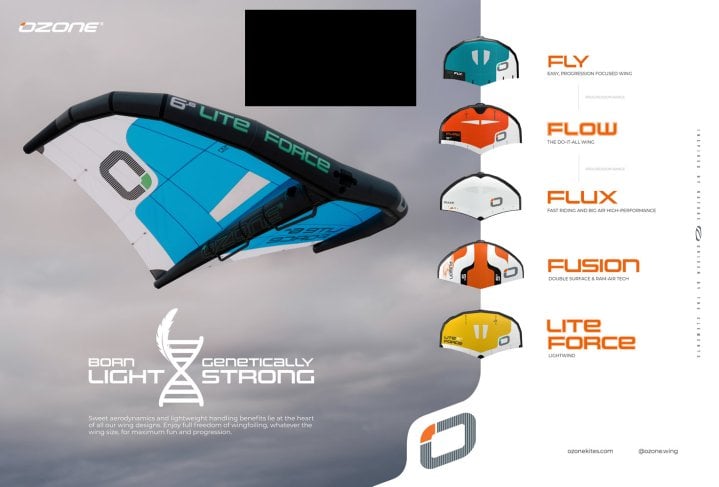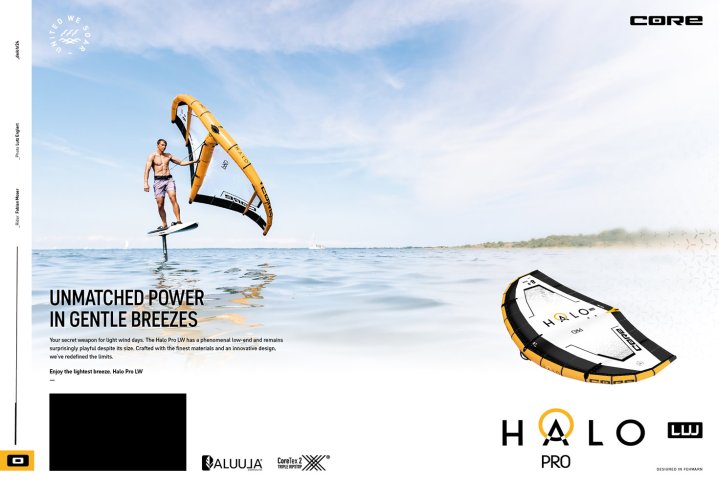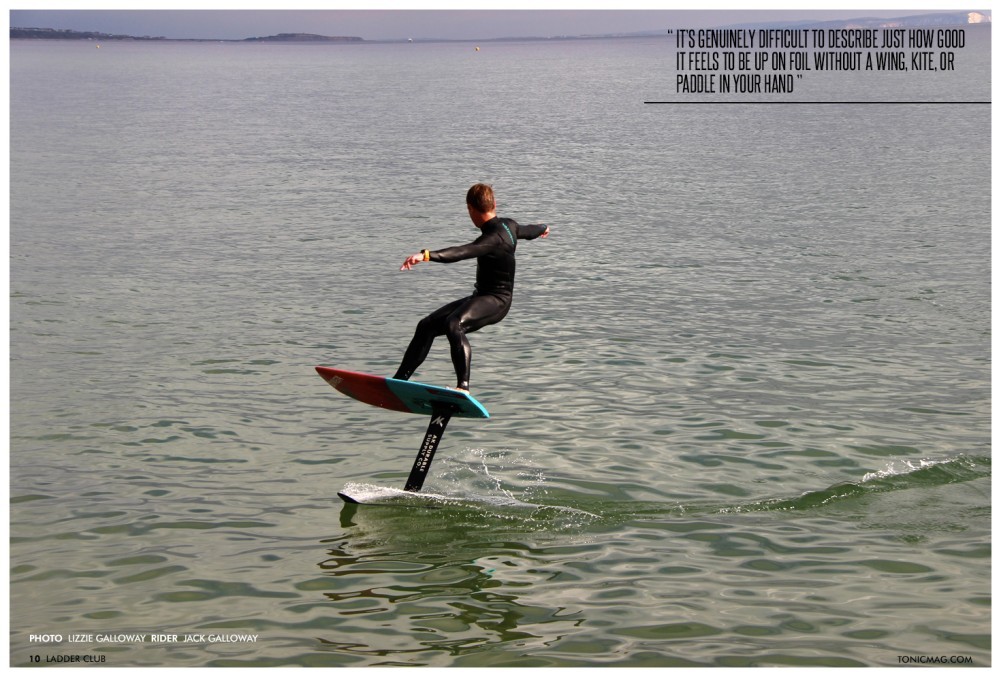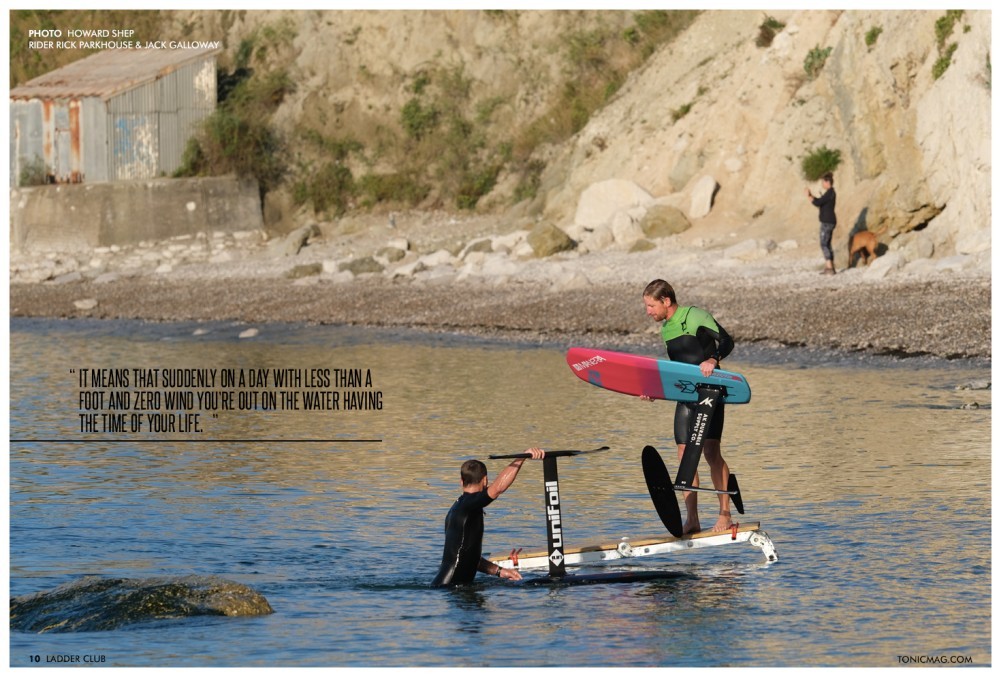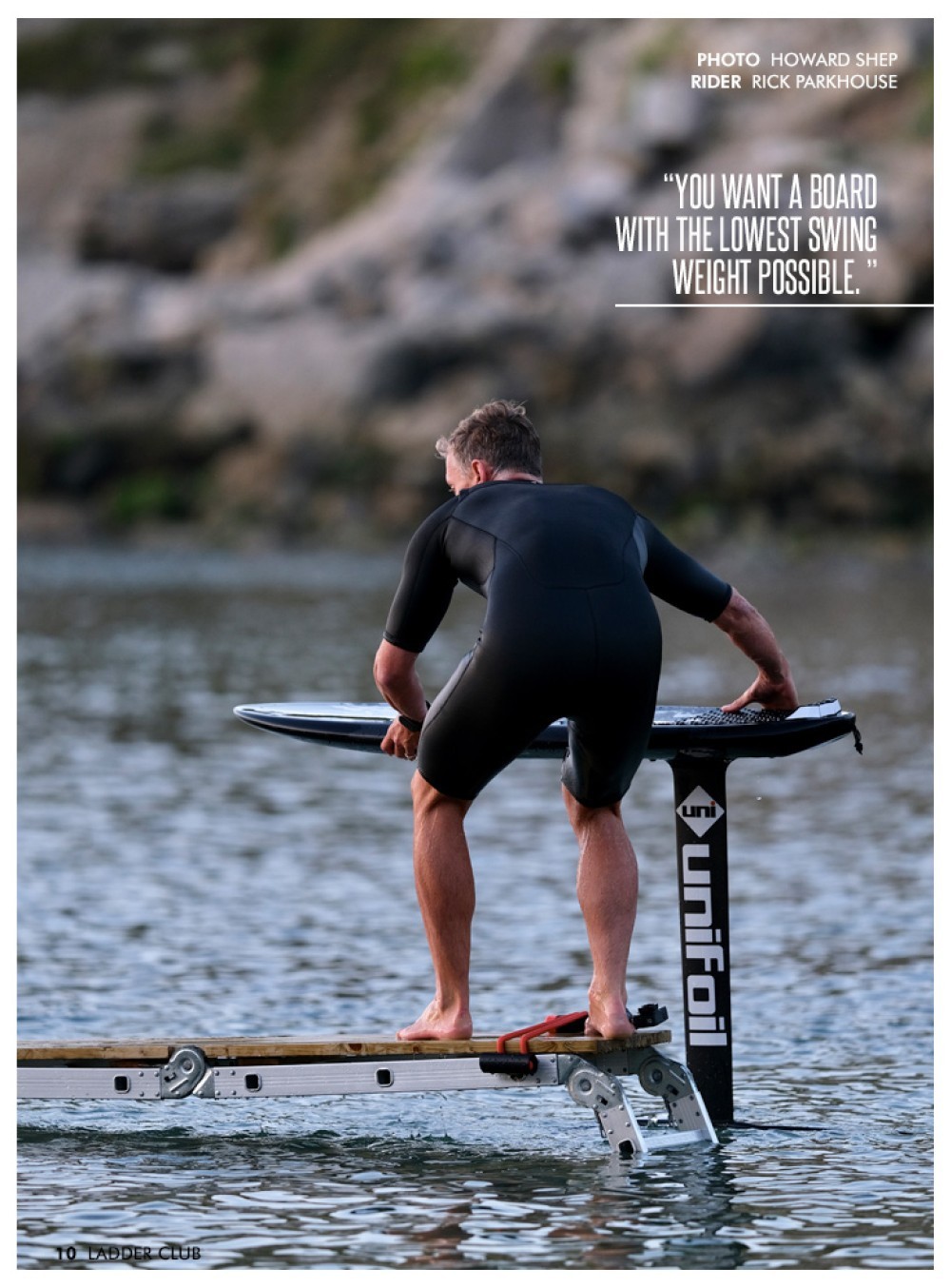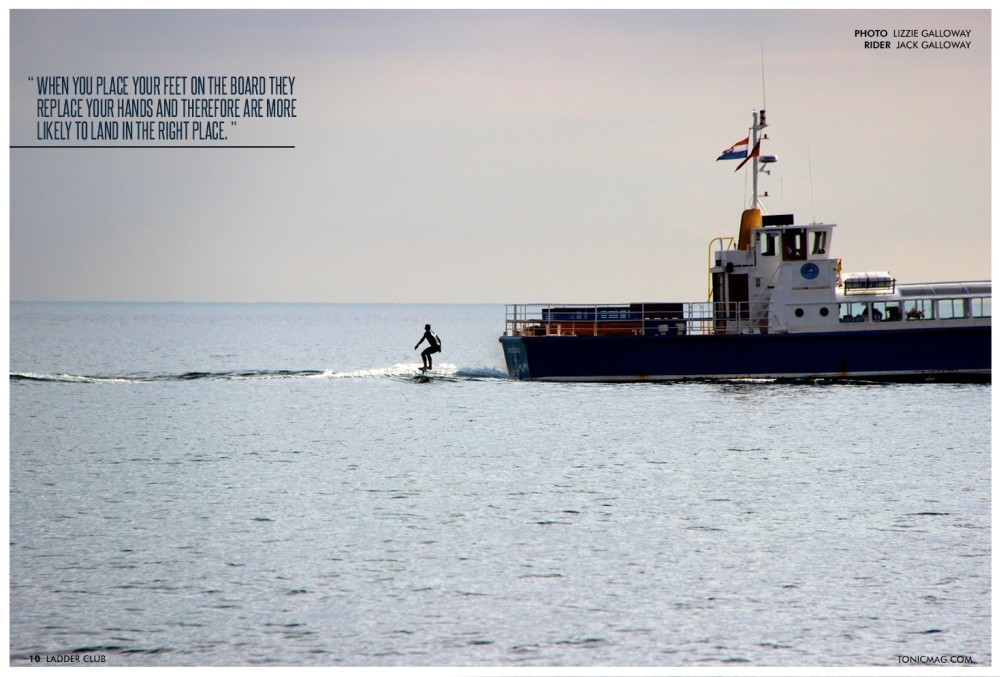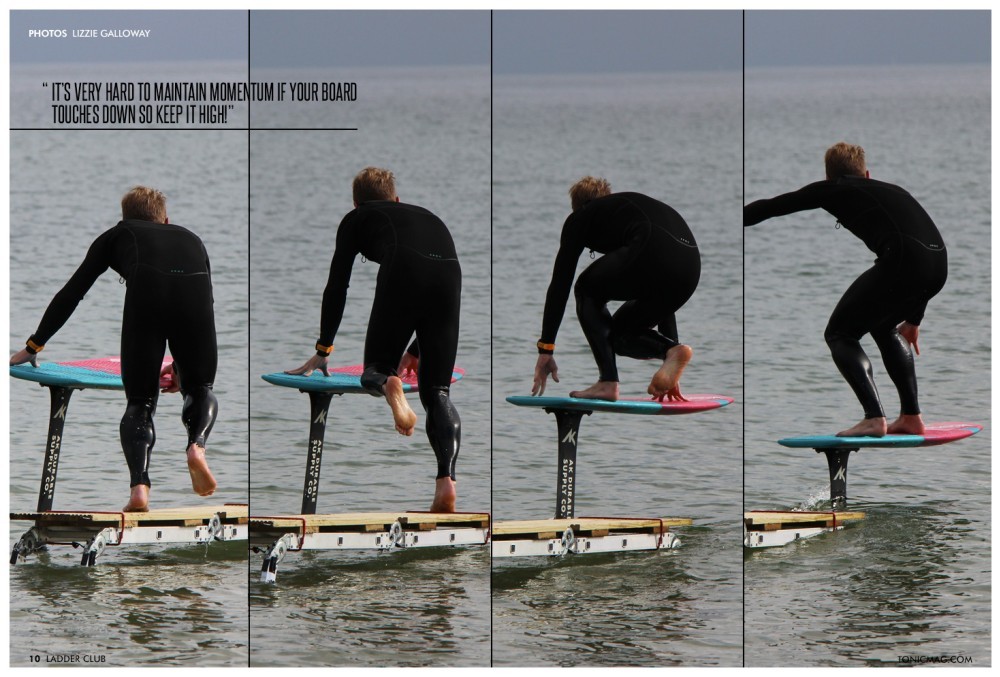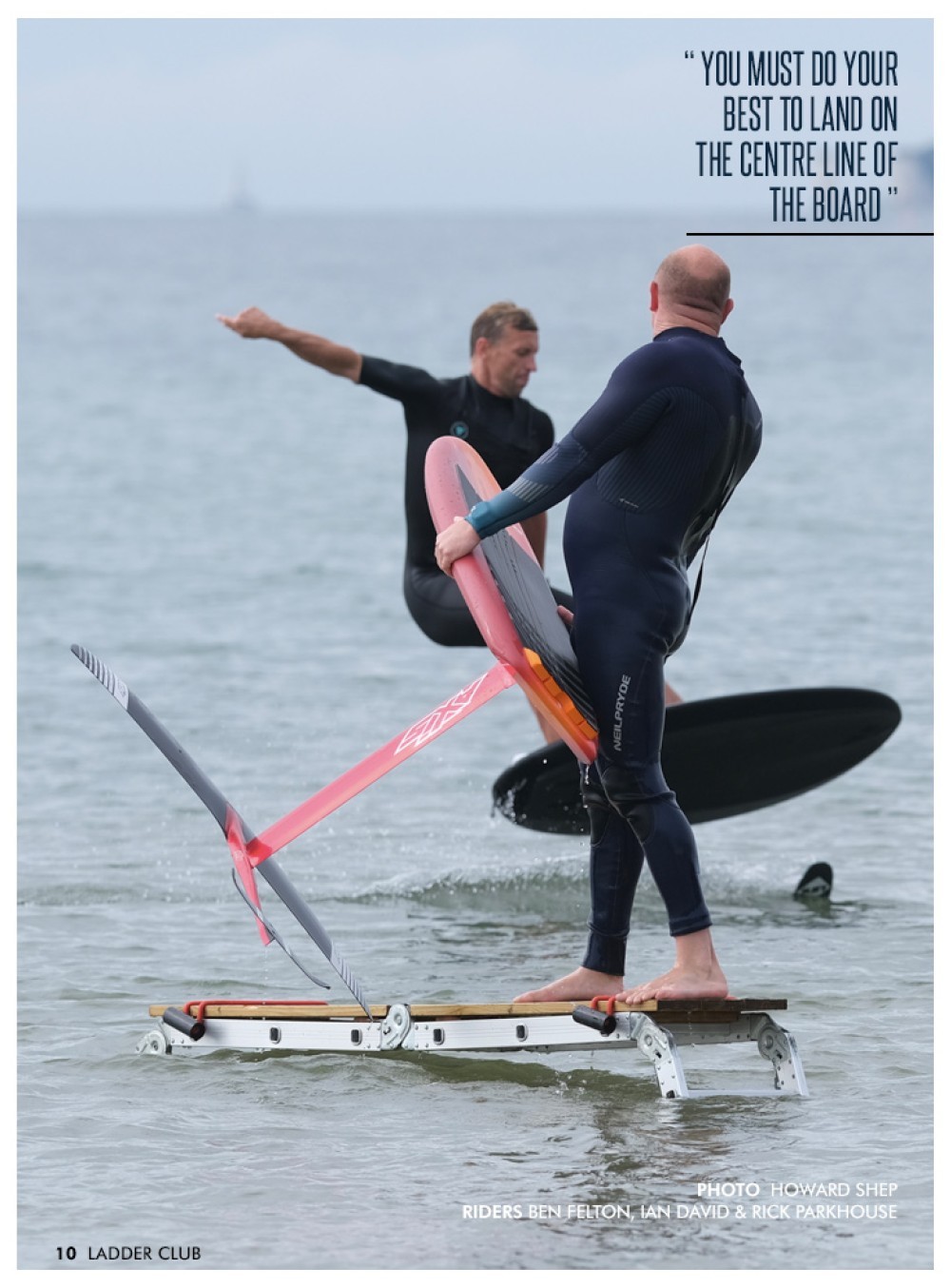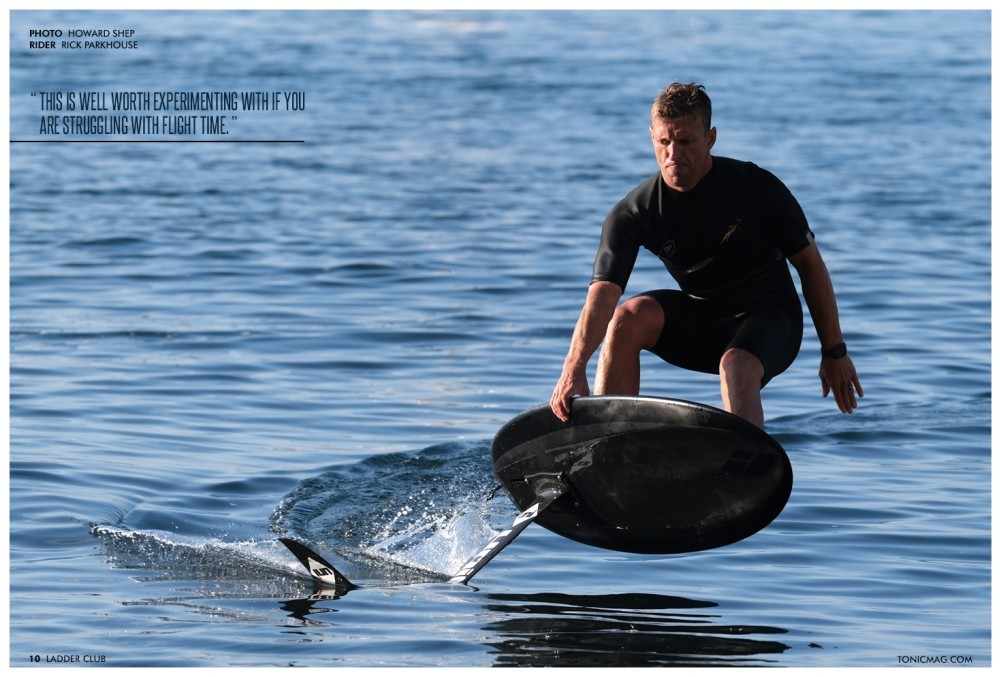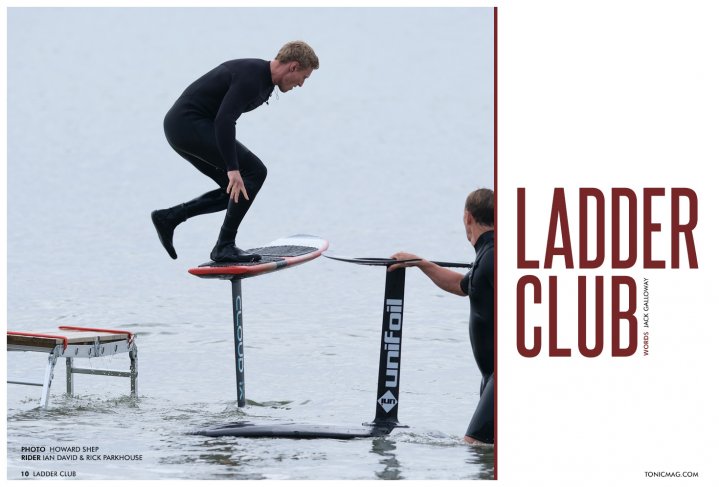
Ladder Club
Issue 10 / Wed 17th Nov, 2021
Jack Galloway spent his summer jumping off a ladder, find out why here...
Jack Galloway spent a great deal of his summer jumping off a ladder, yes, you heard that right. Believe it or not, it’s led to a massive amount of progression for him both in flat water & in the waves. Read on to find out what ‘Ladder Club’ is all about.
So, what is Ladder Club? To explain this we first need to define the dock start, the craze that is sweeping the world, or at least the foiling world. To dock start is to run with your foil board off of a dock, pontoon, rock, or platform, jump onto it and propel yourself forward by ‘pumping’ the foil. As foil technology has rapidly progressed the equipment available to those wanting to pump their foil has become much better & much more efficient. Large high aspect wings have made this sport a reality for the majority of those wanting to give it a try, that being said, it is still far from easy!
Why the ladder? For myself and the @BHFoilerz crew here on the South Coast, our first dilemma was the lack of public docks available, this solved that. The second reason and something that became much more relevant as time went on was the fact that you can put the ladder anywhere you like. What a game-changer. All of a sudden we could use the ladder to catch waves!
Why is that such a good thing? I come from a kitesurfing background, I’ve been kite foiling for 6 or 7 years but I’m a very average surfer. The ladder has opened up surfing waves in a way that I never thought possible for me, within a month of nailing the dock start I was linking 5 waves in a row and flying on foil for over 2 minutes. It’s genuinely difficult to describe just how good it feels to be up on foil without a wing, kite, or paddle in your hand, there’s something about the freedom of it that keeps you coming back time and again. The result of all this time foiling waves is that my prone foiling is improving at a far quicker rate than before.
Now don’t worry, we’re not getting this ladder out in a crowded line-up or large waves. What it does is open up spots on smaller days where the waves don’t break or it’s too shallow to take off on the foil, therefore increasing your time on the water ten fold. In fact, it means that suddenly on a day with less than a foot and zero wind you’re out on the water having the time of your life. Who can complain about that? It turns the ocean into a skatepark, I really can’t recommend it enough.
Jack’s top tips
I won’t lie it took a long time for me to suss this, mainly due to having the wrong equipment without really knowing it but also due to a few flaws in my technique, that once ironed out made a huge difference.
The ladder - You need a 4-section folding aluminium ladder or ‘platform’ ladder, available from most hardware stores or online for around £80. Then 3 x 8ft long decking planks, again available from hardware stores, that you bind together with another plank cut to smaller pieces. Finally, you’ll need to saw out spaces for the push lock hinges on top - this is visible in the photos.
Board selection - This is pretty key, you want a board with the lowest swing weight possible. I use my kite foil board which is 20 litres. It is theoretically possible on any board but you’ll save enormous amounts of energy by going smaller.
The foil - When it comes to the dock start, high aspect wings are where it’s at as they have the most glide. The larger the front wing the more glide you get however the slower you go. I’ve been using both the 1300 & 1600 AK Durable Supply Co. Plasma, with the 1600 being the easiest of the two. As you get better you will naturally progress down in size to go faster and travel further.
Mast length - There is no right or wrong, I’m finding that between 75 & 80cm is the magic number for pumping. However, everyone will have their own preference.
Hands then feet - This was an absolute game-changer for me. You want to start your ‘run’ with your hands on your rails but just as you go to jump place your hands on your deck where you intend your feet to go (see photo/video). This does two things, firstly, it means that when you place your feet on the board they replace your hands and therefore are more likely to land in the right place. Secondly, it gives you 100% more control of the foil in the final moments of take-off. Rather than just throwing, jumping, and hoping your feet connect to the board…
Level board - Aim for a perfectly level board as you line up and take off. If your board is leaning to one side even slightly this will be greatly exaggerated once you step on.
Foil height - Start with your foil as high as possible in the water, this gives you the maximum amount of time to get your first pumps in before that dreaded slap of board hitting the water. I will often have the front wing of my foil sitting on the surface of the water before I start my ‘run’.
Back foot first - As you jump you should take off with your front foot, this way your back foot will land first. This will prevent you from nose-diving the board straight away.
Speed but accuracy - Go for speed using a powerful push from your front leg as you take off but don’t sacrifice accuracy. This is something that will only improve with practise, lots and lots of practise.
The first pumps - Your first couple of pumps need to have a really high cadence. I find that as soon as my feet land on the board before I’ve even stood up properly, I do two or three really quick pumps. The idea of this is to get you flying as high as possible on the foil, it’s very hard to maintain momentum if your board touches down so keep it high!
Arm technique - Again this is something that you will refine with time. To start with though a big arm swing really helps with momentum. Every time you bring your legs up your arms should be swinging in the upwards direction, either in front of or behind your body. I’d recommend watching a few videos and trying to break down what other people are doing. When you become more efficient you’ll find you reduce your arm swing naturally.
Tiny foot placement adjustments - You must do your best to land on the centre line of the board however often this isn’t the case. The best time in this situation to move your foot position is on the ‘up’ part of the pump. As you suck your legs up it allows a millisecond to make an adjustment before the next down push. As with everything mentioned above, get lots of practise will help the movements become muscle memory.
To shim or not to shim - Big shoutout to Rick Parkhouse (@allthefoils) who earlier this summer spotted that my nose was riding fairly high and suggested a baseplate shim to flatten it off, therefore increasing efficiency. It worked a treat. You can also shim your tail to adjust the angle of attack resulting in an increase or decrease of lift. This is well worth experimenting with if you are struggling with flight time.
Do some cardio - your fitness has a direct influence on how long you can pump for. In the nighttime hours this winter when you can’t get on the water go for a bike ride or run, it’ll make a huge difference.
Get the right conditions - Sometimes it can be helpful to go out in a breeze and pump downwind. Something else to be aware of is how much energy the ocean holds, pumping towards oncoming waves is actually more efficient than on completely flat days. Fly your foil high as you approach the wave, as you glide down the back of the wave you get a moment to rest and reset ready to start pumping again.
Run, pump, crash, repeat - no more words needed. Enjoy!
I hope this has inspired you to give it a shot and in turn helped your progression. The possibilities feel endless in this sport; I’ve recently started ladder starting straight into downwind runs and on flat days ‘wake thieving’ small ferries & boats. I’m still just as stoked as the day I got my first successful start.
Videos
By Jack Galloway


